Archived Mold Remediation Blog Posts
Think You Have Mold?
8/8/2022 (Permalink)
 We are Mold Remediation Specialists
We are Mold Remediation Specialists
If you see visible mold, do not disturb it. You can inadvertently spread the mold infestation throughout your home. When mold is disturbed, the mold can release microscopic mold spores which become airborne and can circulate inside your home.
What to Do:
- Stay out of affected areas.
- Turn off the HVAC system and fans.
- Contact SERVPRO of Upper East Side for mold remediation services.
What Not to Do:
- Don’t touch or disturb the mold.
- Don’t blow air across any surfaces with visible or suspected mold growth.
- Don’t attempt to dry the area yourself.
- Don’t spray bleach or other disinfectants on the mold.
About Our Mold Remediation Services
SERVPRO of Upper East Side specializes in mold cleanup and restoration, in fact, it’s a cornerstone of our business. Our crews are highly trained restoration professionals that use specialized equipment and techniques to properly remediate your mold problem quickly and safely.
If You See Signs of Mold, Call Us Today – (917) 924-2260
Facts and Myths about Mold
8/6/2022 (Permalink)
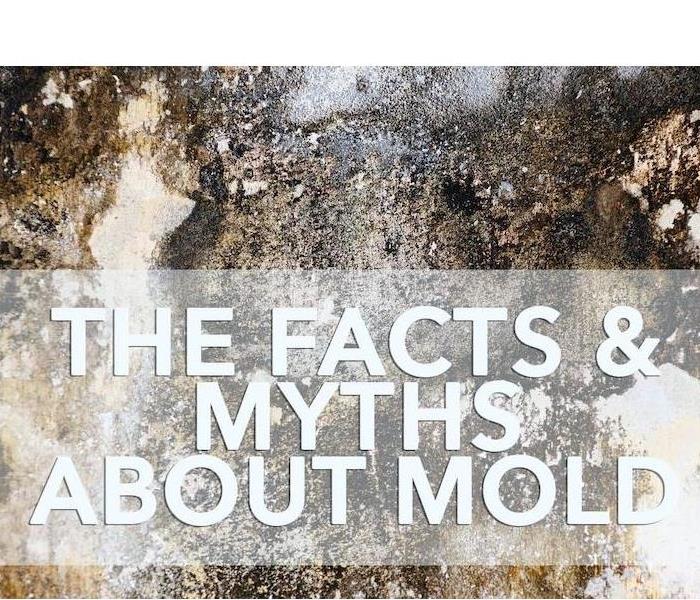 Facts and Myths about Mold
Facts and Myths about Mold
Mold Myth #1:
There Should Be No Mold In My Home
Mold spores are present everywhere both indoors and outdoors. It's in the air we breathe and there is no way to completely eliminate it.
Mold Myth #2:
Mold Serves No Purpose
Some molds are used in the production of cheese and in some medications, such as penicillin
Mold Myth #3:
Mold Exposure Will Cause Health Effects
Not everyone is affected when exposed to mold, but mold does have the potential to cause health effects. Those most affected include anyone prone to respiratory problems and anyone who is immune compromised.
Mold Myth #4:
Mold Is Always Visible
Just because you can't see mold, doesn't mean it isn't there. If you can smell a musty earth like odor, mold is likely present.
Mold Myth #5:
Bleach Will Kill Mold
Bleach will kill live mold, but it will not kill mold spores.
Mold Myth #6:
You Can Easily Identify The Type Of Mold Growing
There is between tens of thousands to hundreds of thousands different types of molds and fungi, way too many for you to able to identify a specific type.
Mold Myth #7:
You Can Clean Up A Mold Problem Yourself
Even small areas infected by mold, require a professional mold removing service.
Call SERVPRO of Upper East Side
When it comes to mold, you wisest and safest option is to call a certified mold inspector. Even if there appears to be a small amount of mold, a small amount can quickly spread into an infestation. Give yourself peace of mind and call to schedule a mold inspection - (917) 924-2260
If you think you have a mold problem, call SERVPRO of Upper East Side
7/27/2021 (Permalink)
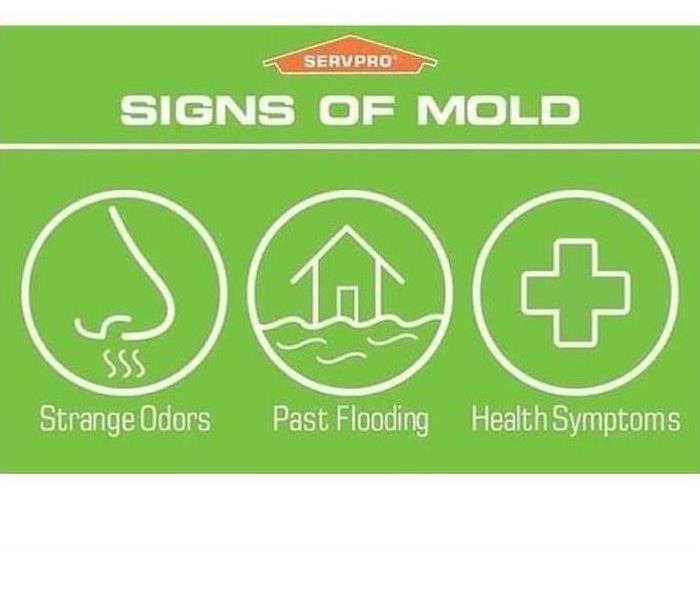 Signs of Mold
Signs of Mold
Microscopic mold spores naturally occur almost everywhere, both outdoors and indoors. This makes it impossible to remove all mold from a home or business. Therefore, mold remediation reduces the mold spore count back to its natural or baseline level. Some restoration businesses advertise “mold removal” and even guarantee to remove all mold, which is a fallacy. Consider the following mold facts:
- Mold is present almost everywhere, indoors and outdoors.
- Mold spores are microscopic and float along in the air and may enter your home through windows, doors, or AC/heating systems or even hitch a ride indoors on your clothing or a pet.
- Mold spores thrive on moisture. Mold spores can quickly grow into colonies when exposed to water. These colonies may produce allergens and irritants.
- Before mold remediation can begin, any sources of water or moisture must be addressed. Otherwise, the mold may return.
- Mold often produces a strong, musty odor and can lead you to possible mold problem areas.
- Even higher-than-normal indoor humidity can support mold growth. Keep indoor humidity below 45 percent.
If your home or business has a mold problem, we can inspect and assess your property and use our specialized training, equipment, and expertise to remediate your mold infestation.
If You See Signs of Mold, Call Us Today – (917) 924-2260
Mold Is Everywhere
5/6/2020 (Permalink)
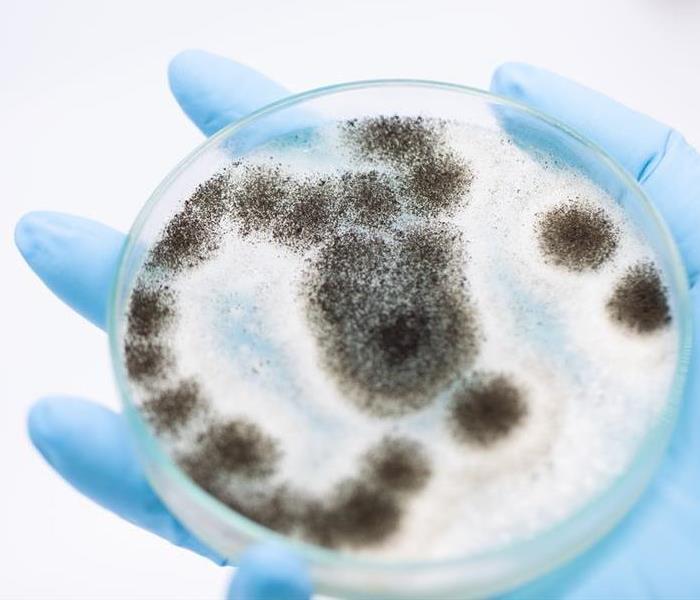 Mold Growth
Mold Growth
Mold is a naturally occurring substance, and it is a form of fungus. Mold produces spores, which spread by floating around in the air. They are everywhere and can not be eliminated from indoor air. Mold spores are usually not a problem, unless they come in contact with moisture. Once in contact with moisture, they need food and oxygen to grow. Mold spores thrive where it is moist and warm, so when they land on something wet, they multiply and that is when mold becomes a problem. Unchecked, mold growth can cause severe damage to your home and business, as well as your belongings and worst of all, can cause health effects.
Mold can live and grow on any organic matter. Some examples of where mold can grow are, clothing, leather, paper, ceilings, floors, walls, showers, window sills and even glass. In some cases, mold growth may not be obvious. Area's that are often damp, such as laundry rooms, bathrooms and basements, are common areas for mold growth. Some signs that may indicate you have a mold problem are, water stains, discoloration on walls, floors or ceilings or if you notice bubbling or peeling paint. You may also notice a musty, moldy odor.
If you suspect you have a mold problem, contact SERVPRO of Upper East Side, 917-924-2260. We are available 24 hours a day. Every team member of our crew has IICRC certifications as Applied Microbial Remediation Technicians. This accreditation ensures the training and experience of each team member in addressing mold growth.
Mold in cars!
3/20/2019 (Permalink)
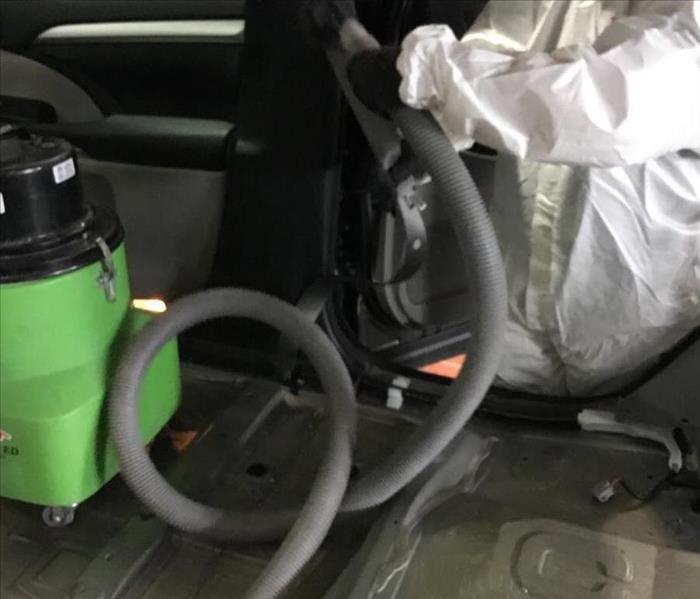 The process of removing mold from a car.
The process of removing mold from a car.
I know you may be thinking, can mold really occur in cars? The answer is yes, and more often than you'd think.
We get called in quite often to deal with mold in cars so that they can be cleaned up, and then sold.
It's a process that requires many steps, but can most definitely be done in one day. After we do all the steps to clean up the car and remove the mold, we make sure to test it. Once we get the test back that says mold is no longer present, then they are good to go on selling the car.
If you feel you aren't sure if mold is present, then you can ask a professional to come and check it out. That's what we are here for!
How to Identify Mold
9/17/2018 (Permalink)
 Do you believe you have mold growing?
Do you believe you have mold growing?
Mold is everywhere. It’s a type of fungus that grows from tiny spores that float in the air. It can grow almost anywhere that spores land and find moisture and a comfortable temperature, between 40 and 100 degrees F. Typically that includes about every damp place in your home.
You can easily spot the most visible type of mold, called mildew, which begins as tiny, usually black spots but often grows into larger colonies. It’s the black stuff you see in the grout lines in your shower, on damp walls, and outdoors on the surfaces of deck boards and painted siding, especially in damp and shady areas. A mildewed surface is often difficult to distinguish from a dirty one. To test for mildew, simply dab a few drops of household bleach on the blackened area. If it lightens after one to two minutes, you have mildew. If the area remains dark, you probably have dirt.
Mildew is a surface type of mold that won’t damage your home’s structure. But other types of mold cause rot. If the wood is soft or crumbles, the fungi have taken hold and rot has begun.
If you have a high concentration of mold, you may smell it. If you detect the typical musty odor, check for mold on damp carpets, damp walls, damp crawlspaces and wet wood under your floors, wet roof sheathing and other damp areas. Clean up these infestations right away before they get worse, and see the following photos for prevention measures on how to remove mold.
Prevent Mold From growing in your home.
9/14/2018 (Permalink)
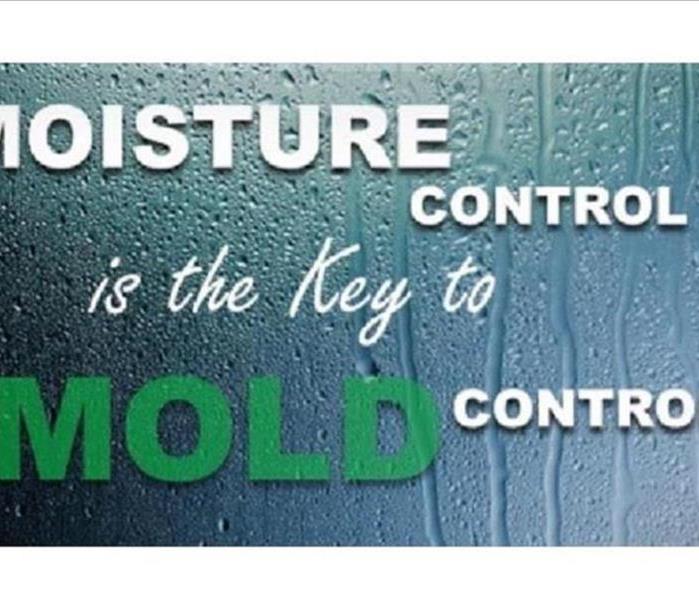 Mold Prevention
Mold Prevention
Mold. The very word is enough to make a person cringe.Mold spores spread easily and cannot be completely eradicated.
Mold can grow anywhere: on carpet, clothing, food, paper, and even in places you can't see, such as the backside of drywall, areas inside walls around leaking or condensing pipes, and above ceiling tiles.
Not only is a mold problem difficult and costly to fix, but mold can also produce allergens and irritants that may compromise your health.
So what can you do if you're concerned about mold growing in your home?
The best approach is preventing mold before it becomes a problem. The key to mold prevention is simple: moisture control.
Here’s a few steps to prevent Mold from growing.
1. Dry wet areas immediately
2. Prevent moisture with proper ventilation.
3. Equip your home with mold-resistant products.
4. Monitor humidity indoors
5. Improve air flow in your home.

 24/7 Emergency Service
24/7 Emergency Service




